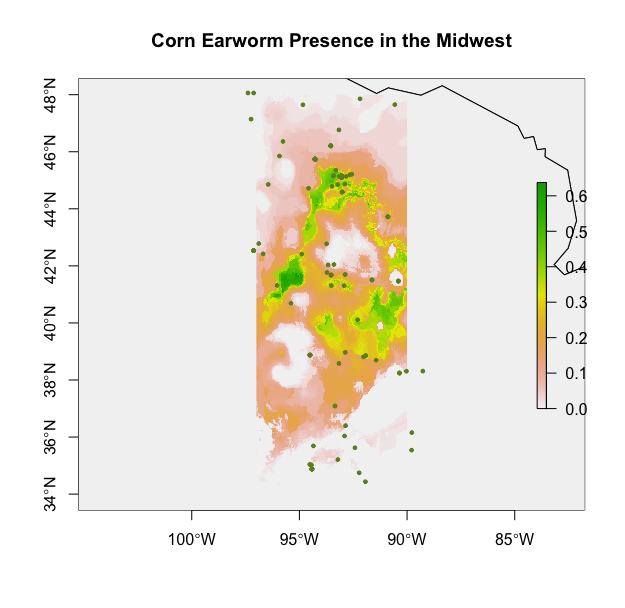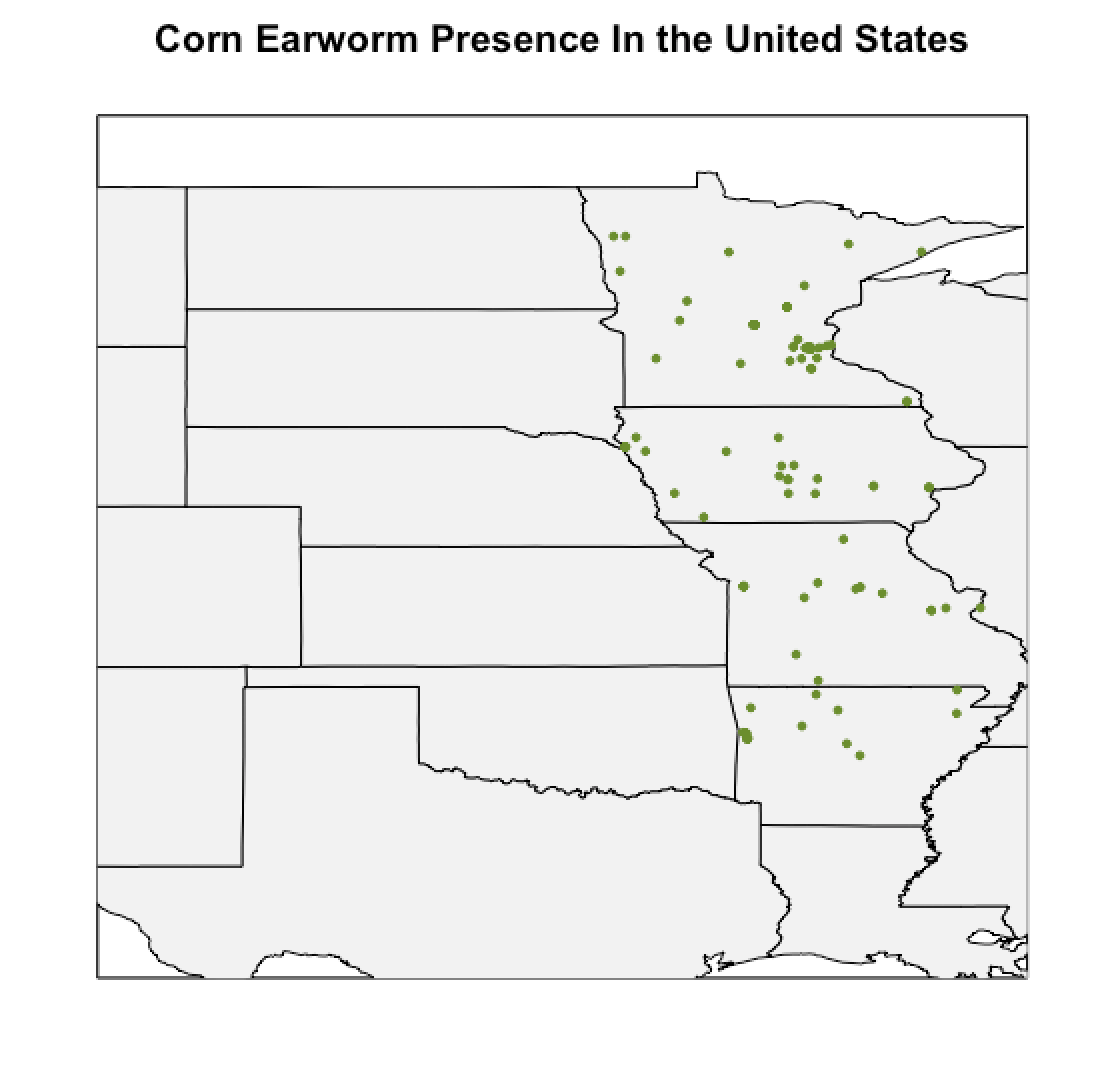Climate Change, Pesticide Use, and Exposures
The goal of this research is to elucidate how long-term shifts in temperature, humidity, and precipitation modify occupational exposure to pesticides and consequently, how these changes in exposure may contribute to rising incidence of chronic kidney disease (CKD) among U.S. agricultural workers. This research takes a transdisciplinary approach towards understanding these dynamics through the use of mathematical modelling in climate science, species distribution modelling, and exposure assessment in conjunction with epidemiological study design and spatial statistics. Prior work has established the spatial distribution of agricultural pests are widening and shifting due to a changing climate. However, a significant knowledge gap exists regarding how these shifts have been and may continue to impact pesticide use and exposure. The agroecological effects of changing climate patterns are relevant to public health because they can introduce additional human disease and morbidity. Ultimately, agricultural workers may be a sentinel population experiencing etiologies of disease directly linked to climate change. This research theorizes shifts in agricultural pests due to warmer temperatures coupled with more frequent extreme weather events damaging crops, may lead to increased pesticide application. The pesticide and heat stress exposure pathway may be key in understanding the causes behind the ongoing epidemic of CKDu (CKD of unknown etiology) in global ‘hotspots.’ Research has not looked at this exposure pathway extensively in the United States to assess its role in CKD rates among agricultural workers. This research’s goal will be addressed through the following aims:


Aim 1: Establish a relationship between changing agricultural pest distributions and pesticide use. This study will use several variations of species distribution modelling (SDM) in conjunction with historical results from U.S. Geographical Survey’s (USGS) Pesticide National Synthesis Project and the National Centers for Environmental Information’s National Climatic Data Center. Species distribution modeling uses limited data to predict insect survival given a set of environmental and climatic parameters. The USGS provides high and low estimates of pesticide exposure at the county level.
Aim 2: Determine incidence rates of chronic kidney disease (CKD) among participants in the NCI/NIEHS’s cohort Agricultural Health Study (AHS) and compare to rates seen in the general population. Diagnosis of CKD will be verified and augmented through survey results from the AHS and through linkages to the Center for Medicare and Medicaid (CMS)’s database, a new feature of the Agricultural Health Study.
Aim 3: Measure and evaluate the associations between hypothesized exposure pathways to incident CKD in AHS participants. The global CKDu epidemic presents without the typical CKD risk factors (diabetes, hypertension, age) and is thought to be a multi-factorial disease process related to environmental exposures. If similar trends are beginning to occur in U.S. agricultural workers, then 1) heat stress 2) nephrotoxic pesticides 3) heavy metal contamination in drinking water 4) and repeated acute kidney injury are hypothesized to compound and contribute to the observed differences in agricultural CKD incidence compared to the general population. Furthermore, historical hazard and crop damage data from the Spatial Hazard and Loss Event database (SHELDUS) will be linked to AHS to examine potential effect measure modification of extreme weather events and CKD incidence.
